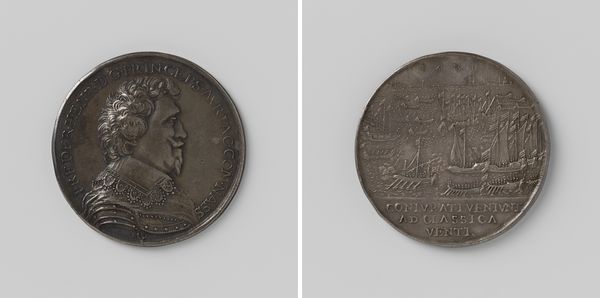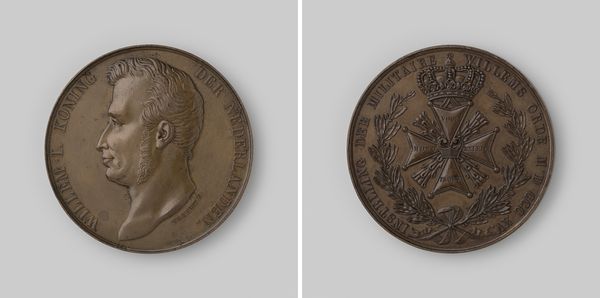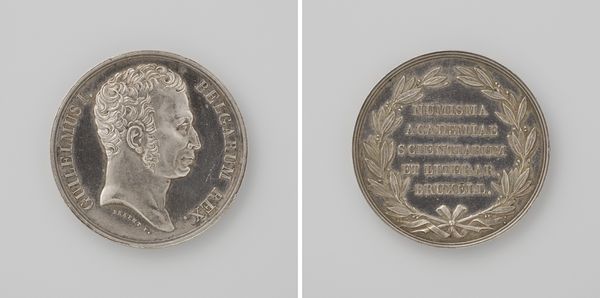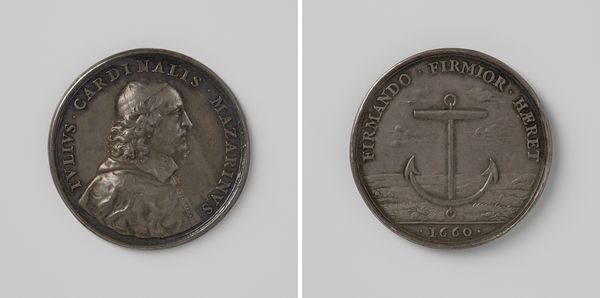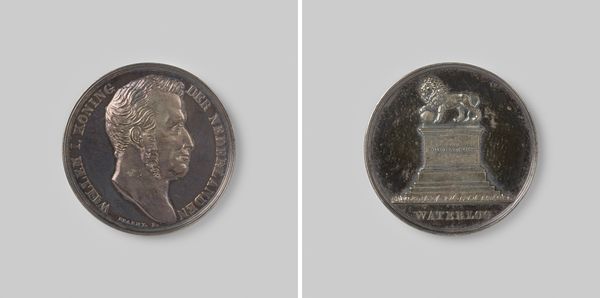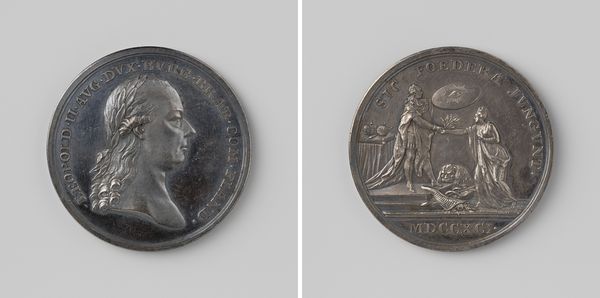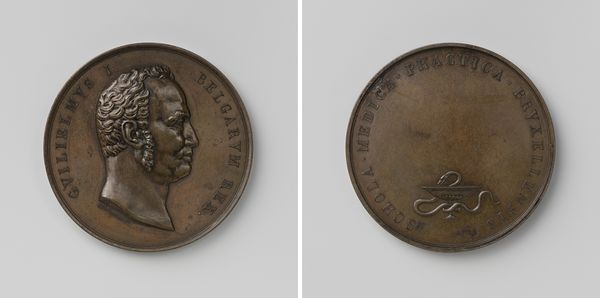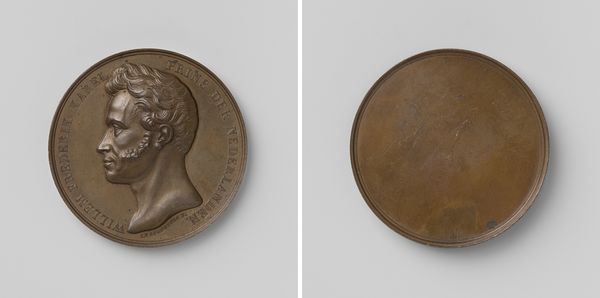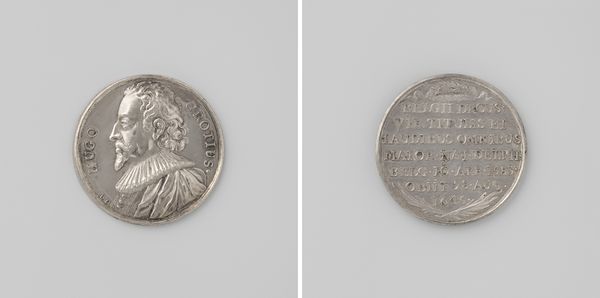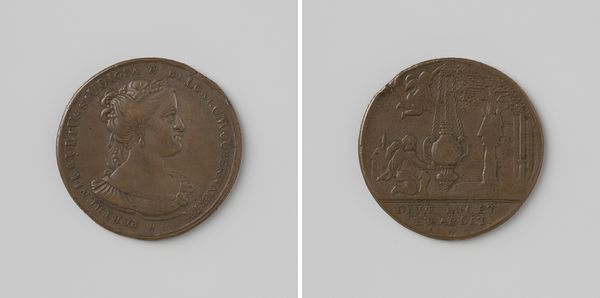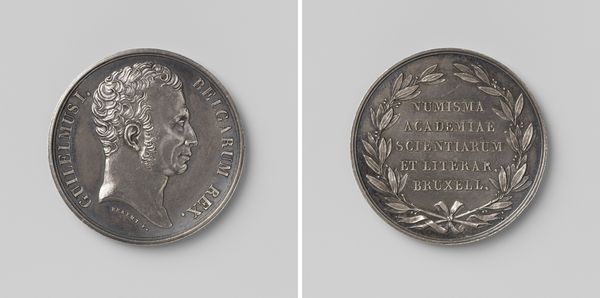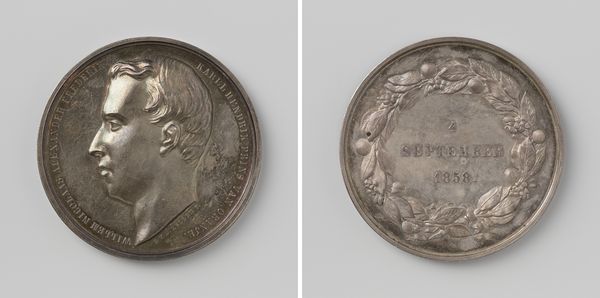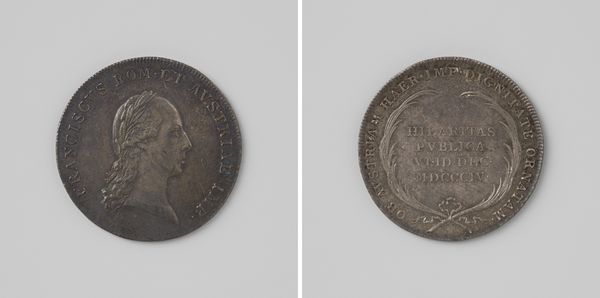
metal, relief, bronze, sculpture
#
portrait
#
metal
#
sculpture
#
relief
#
bronze
#
sculpture
#
modernism
Dimensions: diameter 7.5 cm, weight 270.90 gr
Copyright: Rijks Museum: Open Domain
Curator: This bronze relief portrait dates from 1965 and honors H.J. van Doorne, the founder of DAF. It's an interesting piece, really capturing a moment of Dutch industrial history. Editor: My initial impression is of contrasting textures—the roughly sculpted portrait versus the clean, almost mechanical inscription on the reverse. Curator: Precisely! The contrast draws our attention. The obverse features a profile of Doorne, with his name inscribed. But let's turn to the other side. Here, beside the years 1900-1928-1965, we see words describing his company DAF, alongside a small anvil—the tools of their trade. Editor: Semiotically, the anvil acts as a signifier for industry and labor, directly contrasting with the portrait which represents the individual at the heart of the institution. But the texture difference speaks volumes, doesn't it? It creates a hierarchy. The individual is foregrounded through careful detail. Curator: It absolutely reflects the social climate of the era. After World War II, industrialists were viewed almost as national heroes in some sectors, vital to rebuilding the Dutch economy and society. This portrait normalizes him, makes him approachable. The inscription almost celebrates him in the act of rebuilding, as opposed to only having built in the past. Editor: Right. While there is clear honoring of a specific person through both the inscription and portraiture elements of the work, I also notice it creates a sense of stoicism. The lack of color reinforces it. This creates both historical meaning, yet invites me to focus more specifically on how the techniques communicate both precision and strength through materials. Curator: A poignant observation. We can see how art memorializes and mythologizes figures central to socio-political contexts, shaping our understanding and appreciation of history, while simultaneously offering a unique approach to materials. Editor: Ultimately, the contrasting approach between obverse and reverse makes this relief a fascinating study in the interplay of personification and institutional history.
Comments
No comments
Be the first to comment and join the conversation on the ultimate creative platform.
